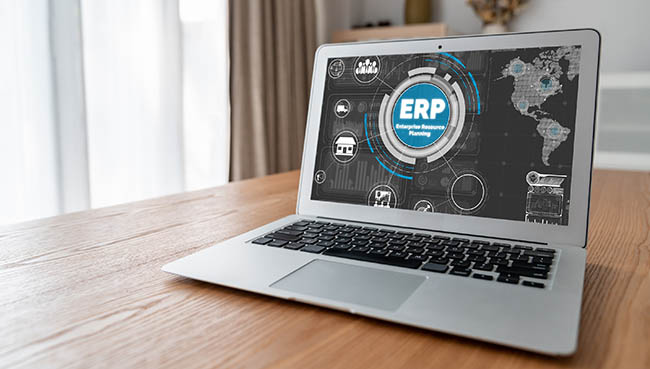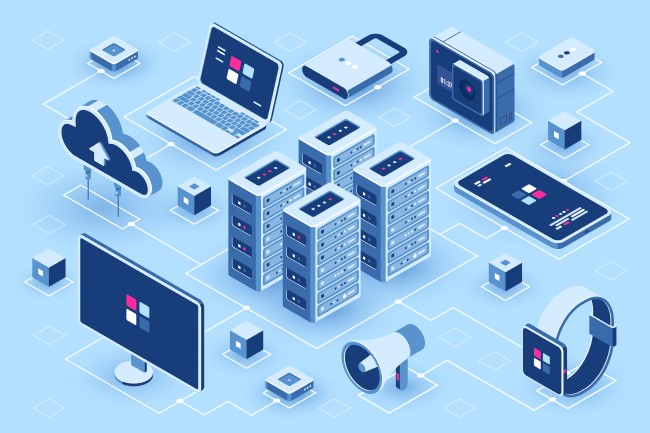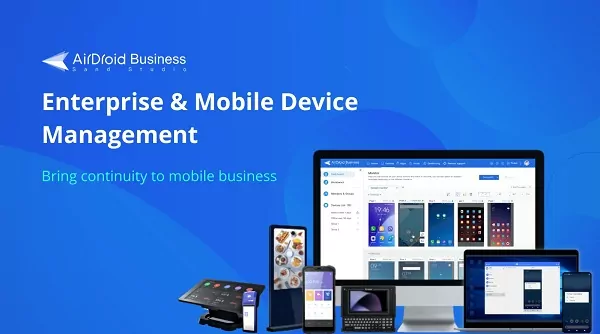What is On-Premises MDM and its Benefits? How to Deploy?
The MDM (Mobile Device Management) market can be divided into cloud and on-premise. Just when cloud-based MDM reveals a growth momentum due to the collaboration of IT giants (let's say Microsoft and Citrix), not to be outdone, the on-premise market is expected to rise remarkably, according to the
Though its scale is not as big as the cloud, it does not mean on-premises MDM is not good enough. Conversely, on-premise is a safer deployment which is preferred by large entities and even governmental organizations.
1What is On-Premises MDM?
On-Premises Mobile Device Management is the approach to managing mobile endpoints in a central system and mastering all data in the organization's own server. It takes no difference from MDM solutions but allows the IT administrator to establish robust safeguards for data protection by using the self-hosted deployment method.
With it, the organization is able to remote control and configure rules for the devices like smartphones, tablets, laptops, and other hand-held electronic equipment. For instance, the blocking policy on the network will help to mitigate risks posed by corporate data theft and malicious viruses. The on-prem MDM provides an ideal answer for businesses looking to keep data secure in their own in-house infrastructure.

2What is the difference between MDM On-premise and Cloud-based?
When choosing a
On-premises MDM | Cloud MDM | |
|---|---|---|
Data Backup | Local hosted server | Third-party cloud service provider |
Security | Internal access only | External access of cloud MDM |
Install | Install in in-house infrastructure without internet | Install in target device or use web browser with internet |
Cost | Hardware facility & on-premise MDM software licensing | Cloud MDM software only |
Any software generates data, and Mobile Device Management is no exception. That device info, user (employee) info, and important company documents might be exposed during management. Where to keep them makes On-premise MDM and cloud MDM different.
MDM On-premises is integrated into the local server, and thus, can be regarded as an in-company mechanism. All data relating to device management will be stored in the company's own data center.
Unlike the former, Cloud MDM will share the data with the company that applies MDM SaaS. The information will be collected and saved by the Cloud MDM software. Sometimes, the collection will involve a third-party cloud service provider which is used by the MDM software.

The location of data backup brings other differences. Security is one of them.
As data is fully kept in an internal environment, On-premises MDM has more control over data access than Cloud MDM. The IT team can build fences to handle malicious threats, further, without no worrying about unexpected leakages occurring outside the company.
Because the data is handed over to third-party software, there is no 100% guarantee for data protection if using a Cloud MDM. It's risky to allow external access anyhow.

As for costs, on-prem MDM requires more than cloud-based MDM for it needs a facility to carry both data and the installation. Thus, in addition to the MDM solution, companies have to purchase hardware or equipment to use on-prem MDM smoothly. While cloud-based MDM only needs to pay for its package fees.
Differences also exist in the installation method. With the package, the IT team can deploy mobile device management on-premise to the company system without the internet. However, Cloud MDM relies on the network to connect the user with the software.
3What're the Advantages of On-Premises MDM? Why Choose it?
Enterprises must determine if On-Premises MDM is the right approach for their business needs, similarly, if Cloud MDM is more appropriate. Looking at their pros and cons might help with the decision.
On-premises MDM | Cloud MDM | |
|---|---|---|
Pros | ● Greater control over data ● More custom capabilities ● Less constrained security measures ● Easier data access without network ● Low latency levels | ● Easier to deploy ● More flexible to scale down ● Lower capital expenditure |
Cons | ● Larger upfront cost ● More investment on maintenance ● Need more professional IT personnel | ● More security and privacy concerns ● More compatibility issues |
The most notable advantages of on-premises MDM are its improved security compared to cloud-based MDM.
With a conventional SaaS solution, applications and systems are stored on remote servers and accessed over the Internet. On-premises solutions, on the other hand, store all data locally in an organization’s own servers. This lowers the risk of data breaches significantly and keeps application and system usage private and secure. Therefore, on-premises MDM is most used in healthcare, banking, financial services and insurance industries.

On-premises MDM solutions also provide greater customization of systems according to needs, for example, extra Firewalls to protect data and tools to set up the functionality. This provides more resources for IT teams to work with and gives them greater control over their software environment.
Factors such as the organization's size, budget, security requirements, and levels of IT expertise might decide if an MDM On-premises solution is a good choice for businesses.
On-prem solutions may be the most suitable for organizations that prioritize control, ownership, and security over other potentially ‘easier and lower cost’ cloud-based solutions.
Cloud-based mobile device management solutions do come with an element of trust between the provider and the user compared to On-Premises MDM.

4How to Deploy Mobile Device Management On-Premise?
Managing mobile device fleets is becoming increasingly important for enterprises. Then, how to use on-premise MDM solutions? AirDroid Business, the Android MDM software with flexible deployment methods and supports PVE system integrated private cloud, can give an example.
- Step 1.Make sure you have the right hardware
- Before you can deploy on-prem MDM, you need to make sure that you have the right hardware. Proxmox VE server requires a minimum of two CPU cores, 4GB of RAM, and 10GB of storage to run. Additionally, your server must have an active internet connection in order to access the MDM solution.
- Step 2.Prepare your Proxmox VE Server
- Once you’ve confirmed that you have the necessary hardware, you can begin the process of downloading and installing Proxmox VE. Start by downloading the Proxmox VE installation image, then follow the instructions on the Proxmox website to install it on your server.
- Before you can deploy MDM on your Proxmox VE server, you must ensure that your server is properly set up and configured. This includes setting up the network and security settings, as well as ensuring that the virtual machines (VMs) are properly running.
- Step 3.Install and Configure the MDM Solution
- Next, you’ll need to configure the MDM solution on your Proxmox VE server. Depending on the MDM solution that you’re using, you may need to install additional packages or set up specific settings. This includes setting up the server, configuring the authentication settings, and connecting your MDM server to your Proxmox VE server.
- Step 4.Enroll Devices to the MDM Solution
- When finish MDM configuration, you can then deploy the devices that you want to manage to it.
- You’ll be able to manage them from the MDM management console. Now, you can set policies, manage software updates, and monitor device usage in order to ensure that your mobile fleet remains secure and compliant, as well as ensure that the MDM policies are enforced and updated.
AirDroid Business - Free to use all features in 14 days
- Remote control varied endpoints
- Flexible deployment methods
- MDM Policy
- Android Kiosk Mode
- App Managed (managed Google Play Store supported)
- Geofencing
- Alters and workflow
- File management
Conclusion
On-premise solutions can provide increased security while also offering more control over custom application capabilities. However, organizations should also weigh the benefits against the costs of setting up and maintaining an on-premise hardware and software solution. With careful consideration and proper planning, on-premises MDM solutions can provide organizations with greater control over their mobile device management, while also offering increased security and customization.
FAQs
Here are some of the key points to look at when choosing an on-premise MDM solution.
1. Security: Make sure to review the security features and procedures offered by the vendor to ensure your data is safe and secure.
2. Ease of Use: It is important to choose an on-premise MDM solution that is easy to set up and use. It should have a user-friendly interface and be intuitive to use.
3. Support: Make sure the vendor provides adequate support for the solution. Look for a vendor that offers customer service and technical assistance to ensure your on-premise MDM solution runs smoothly.
4. Price: Make sure to compare prices and features between different vendors to ensure you get the best value for your money. Choosing the right on-premise MDM solution can be a daunting task. However, by taking the time to review each of the above considerations, you can ensure you select the best solution for your business.





Leave a Reply.